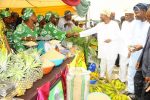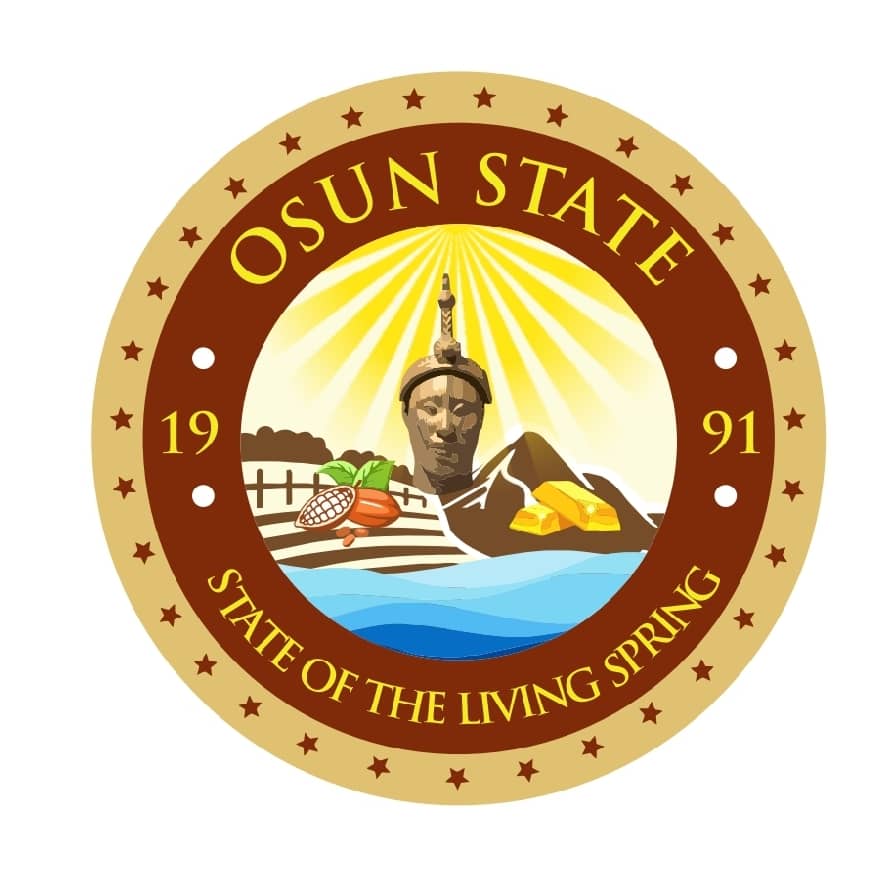All indications show that the Rauf Aregbesola-led administration prioritises economic policies that will spur growth, wealth creation and prosperity for Osun people. These policies are targeted at reducing the rate of poverty and unemployment. The long-term economic plan of the state governor is to create wealth and prosperity for the people.
It is clear that Osun economic model is targeted at driving economic growth and sustainability intended to achieve self-sustainability for the state where proceeds from Internally Generated Revenue (IGR) will be used to drive economic growth and prosperity for the people without depending on the allocation from the Federation Account.
It is on record that Aregbesola has established a process with the introduction of electronic data processing of all taxpayers’ information and this has created easy access to taxpayers’ information. The training and retraining of revenue officers in the use of enabling laws, improvement in the administrative machinery to eliminate bottlenecks and bureaucracy in process have also helped. The state has created a comprehensive data on who should pay tax or the key economic activities that can generate tax income.
No doubt, the state can boast of high revenue capacity and expenditure which needs to compare with the national average. Aregbesola has created high fiscal capacity, or a relatively high capability to cover Osun expenditure needs using its own resources. In 2011, the state had low fiscal capacity, that is, a low level of revenue-raising capacity given what it would cost to provide a standard set of public services to its citizens.
For instance, Osun is now a pacesetter among the six participating states in the State and Local Governance Reform (SLOGOR) Project. The programme, organised by Office of the Auditor-General in Osun State, in collaboration with SLOGOR Project (EU/World Bank Assisted), was held at Aurora Event Centre, Osogbo. Osun, through the Office of the Statistician-General, has released the figure of its Internally Generated Revenue (IGR) for seven years, from 2010 to 2017.
In a statement, the Statistician-General, Prof. Wasiu Gbolagade, dismissed the rumour that Osun was fictitiously giving incorrect figures as a window dressing. He said in 2010, the IGR stood at N3,376,735,645.43, rose to N7,398,572,036.48 in 2011 and was N5,020,250,633.94k in 2012. Gbolagade said the IGR in 2013 was N7,284,225,003.77, became N8,513,274,186.67 in 2014, while it was N8,072,966,446.00 in 2015, N8,884,756,040.35 in 2016 and N11,731,026,444.38k in 2017.
He said: “The IGR increased from N3.38 billion in 2010 to N8.51 billion in 2014. It increased from N8.88 billion in 2016 to N11.73 billion in 2017, representing percentage increase of 32.4. The types of IGR the state depends mostly on are PAYE, MDAs revenue, direct assessment, road taxes and other taxes. Of the above, PAYE generated the highest revenue for the state.
From a paltry N300 million a month about 7 years ago to N1.6 billion now, internally generated revenue (IGR) in the state appear to have taken a quantum leap. Osun has also been ranked as the second less miserable and poverty-ridden state in the country for the year 2017, according to a report by Financial Derivatives Company released on January 1, 2018. The report, titled: ‘How the States Performed in 2017’, stated that Osun had the lowest net FAAC allocation in the country but was not delinquent in the payment of salary arrears.
The investment in human capital by the Aregbesola administration would yield bountiful returns in education tax, thereby contributing substantially to the state’s monthly IGR target. In line with this, 277 model schools with about 1,811 modern classrooms were built or rehabilitated and the schools were equipped with 62,922 sets of chairs and tables. Every school day in Osun, 253,000 elementary school children receive a nutritious meal produced largely by local farmers to boost learning as well as local production. The Osun School Feeding Programme is the longest running of its kind in the country. In six years, Osun has, through its basic education agency invested billions to build capacity, both in human and physical infrastructure.
The Osun Agency for Community and Social Development Project has also partnered with the World Bank, committing, at least, N2 billion on several social developmental projects to reach 1,073,129 beneficiaries in rural communities. The partnership is delivering 356 inclusive, gender-sensitive and multi-sectoral micro projects, covering education, rural electrification, primary health care, transportation, and potable water provision in 263 communities across the state. Most of these businesses and individual beneficiaries are already captured in the tax net.
The efforts of the state government soon resulted in corresponding increase in investments and production in Osun State. Tuns Farms, an indigenous poultry company, in partnership with smallholder farmers, ramped up broiler production to position the state as the second-largest broiler producer in the country. Omoluabi Garment Factory, a PPP venture between Sam and Sara Garments and Osun government, emerged as the largest garment factory in West Africa. RLG Adulawo, an indigenous computer assembly plant, also established operations in Osun as a result of the favourable infrastructure in the state. These investments created many jobs with both the organisations and their staff boosting the tax revenues of the state government.
Between 2013 and 2017, The Oxford Poverty and Human Development Initiative rated Osun second-highest in Human Development Index among the 36 states in the country. In 2014, Rencap in its 36 shades of Nigeria economic review of states ranked Osun as the 7th largest economy in Nigeria, while in 2013 the NBS rated Osun as the state with the lowest poverty rate in Nigeria.
With the good outing of the Aregbesola administration so far, creating an enabling environment for investments and also providing critical infrastructure, it is not surprising that the state is so highly rated by independent observers. The goodwill has already reflected in the IGR growth trajectory, prompting the collective aspiration of citizens of the state as well as government officials that N5 billion monthly IGR is realisable.
- Inwalomhe Donald writes from Benin City ([email protected])m










